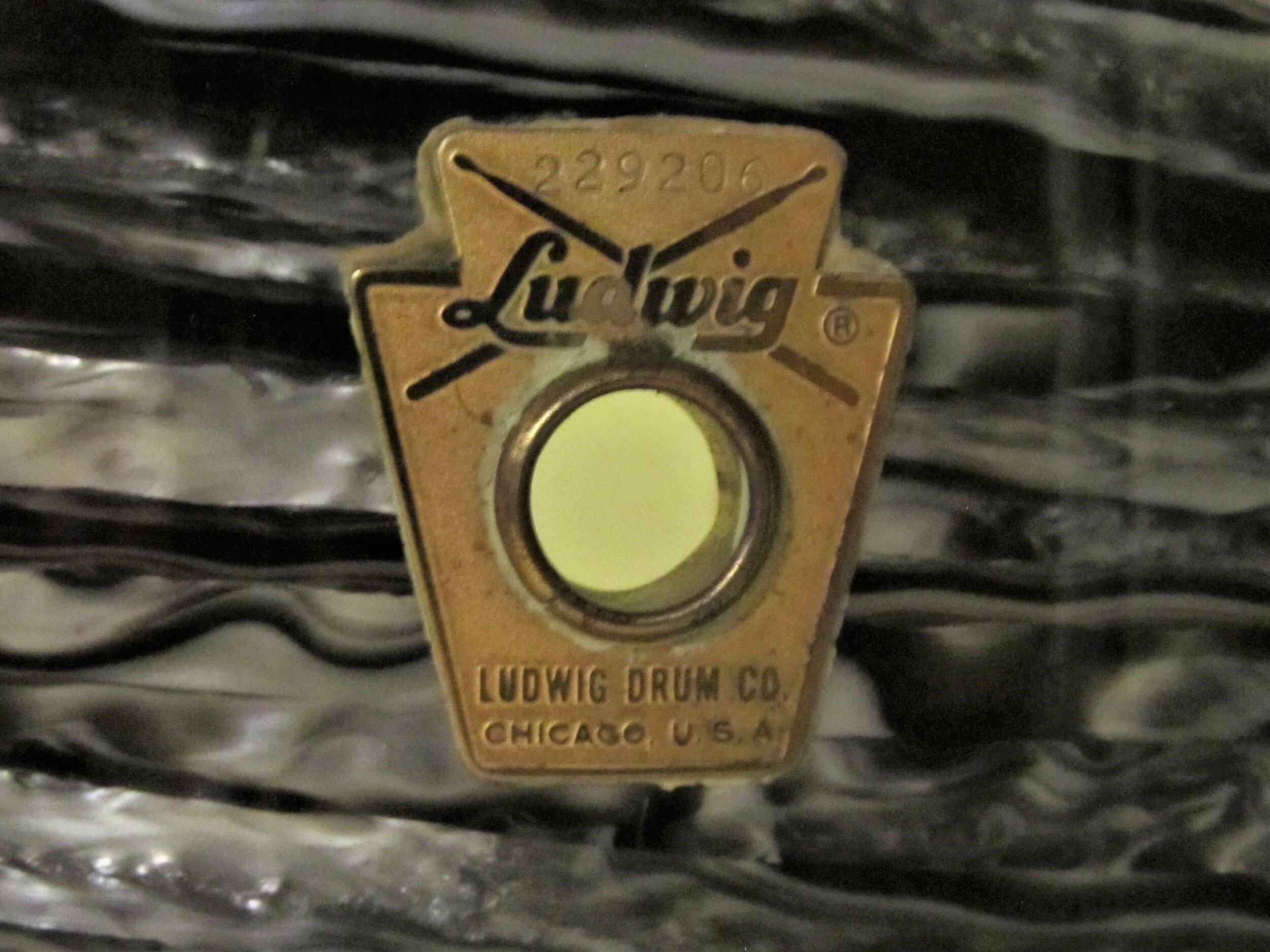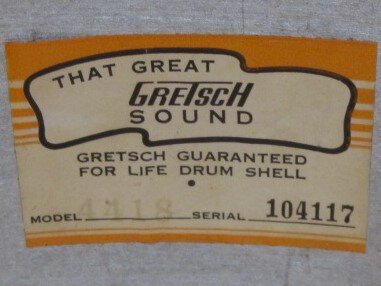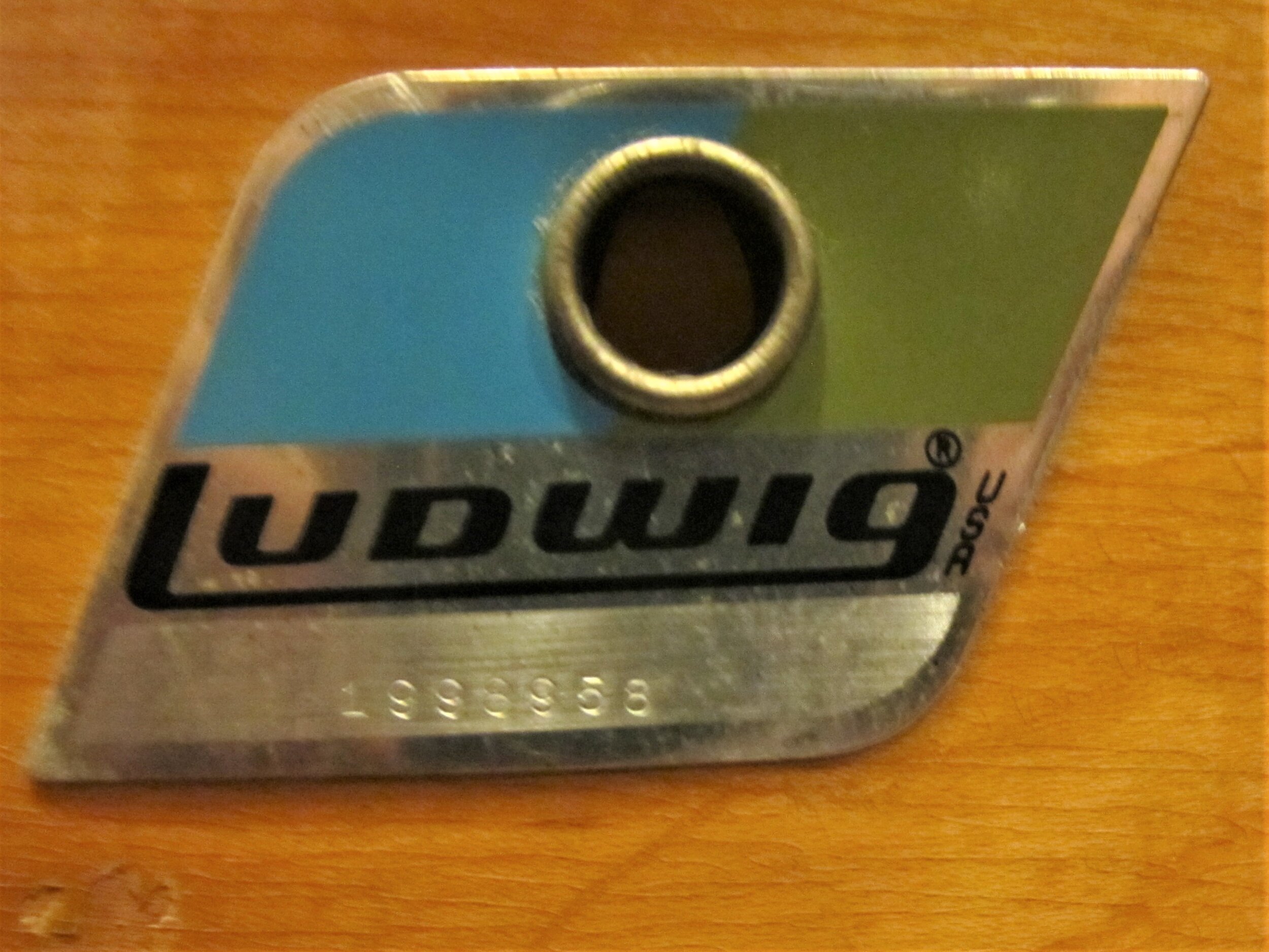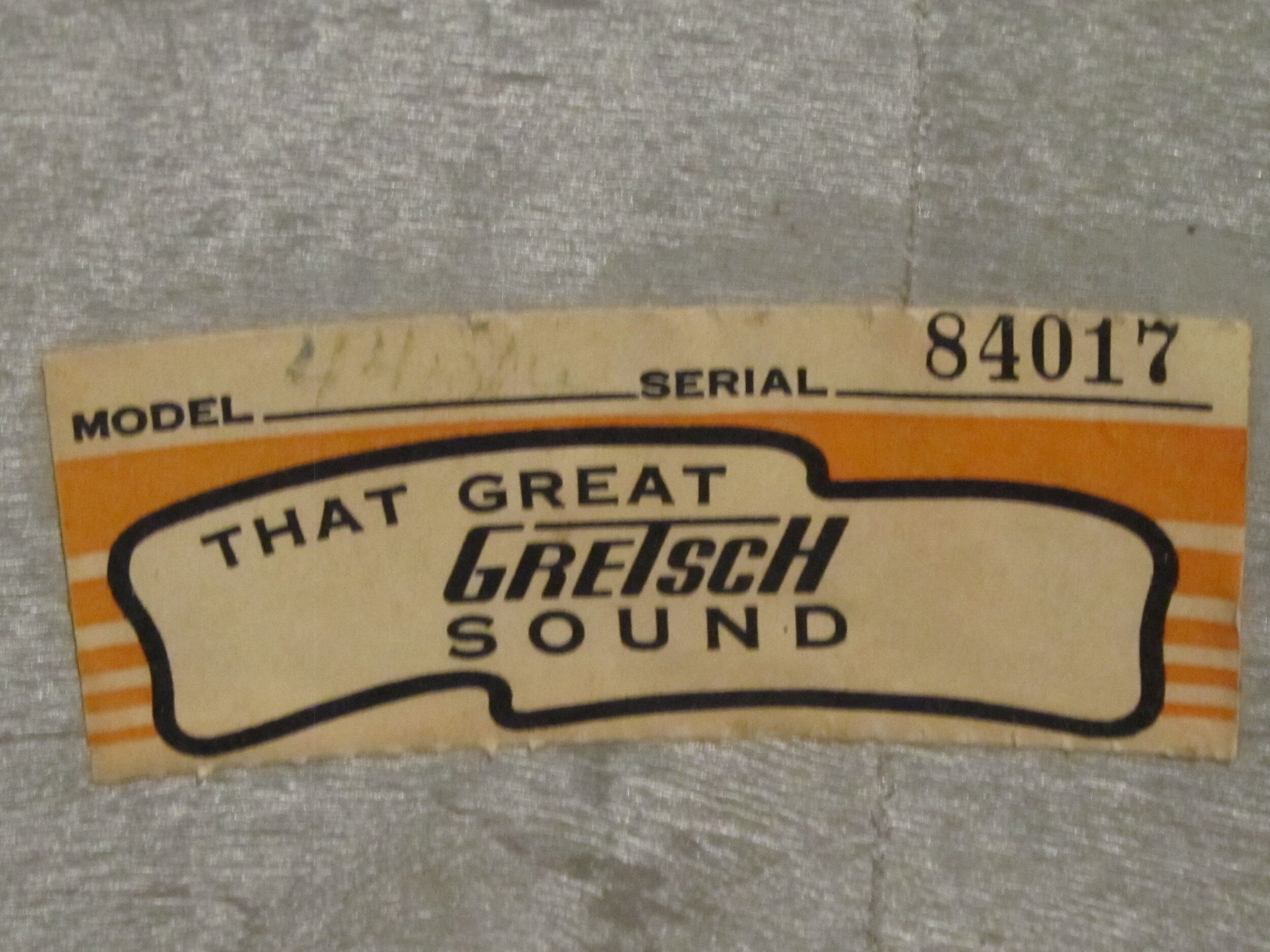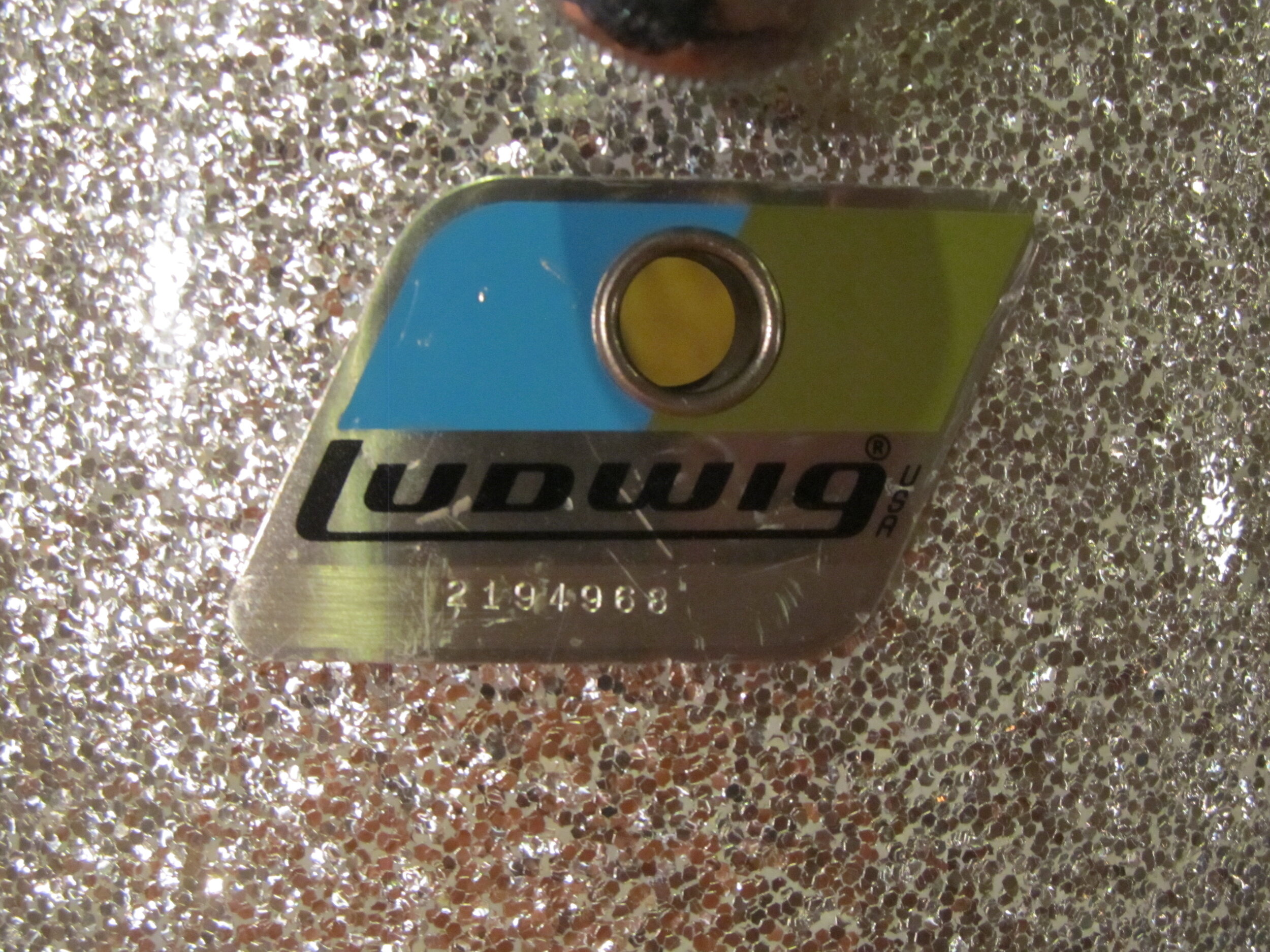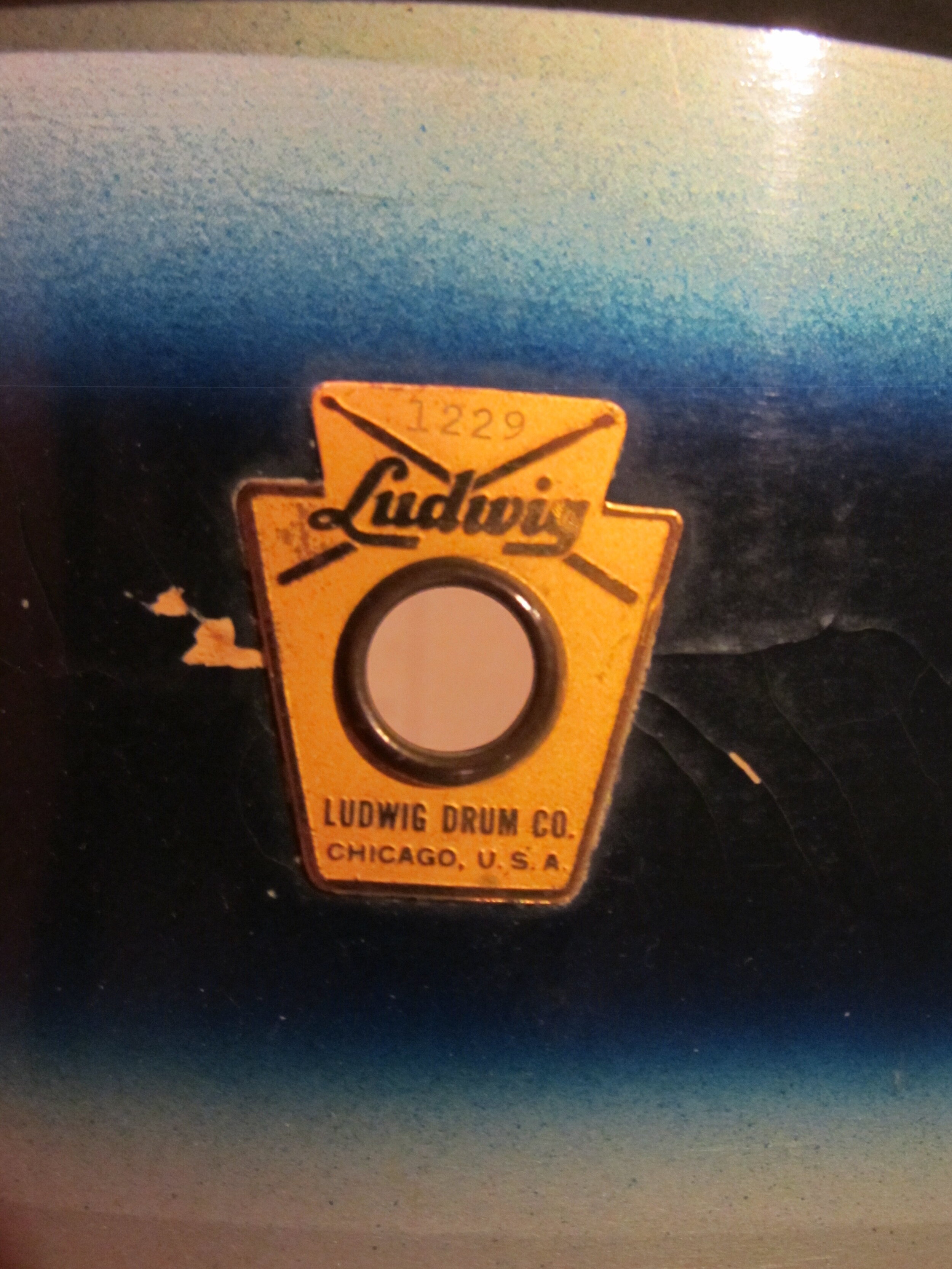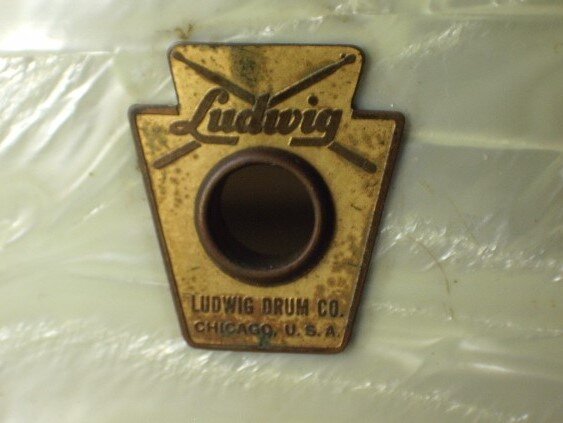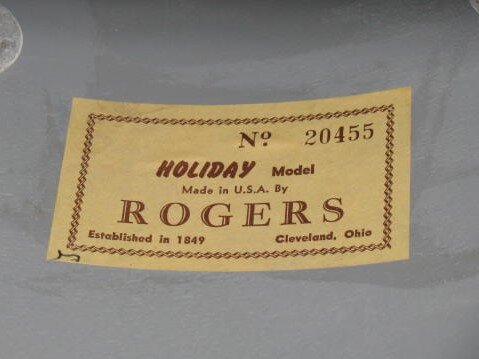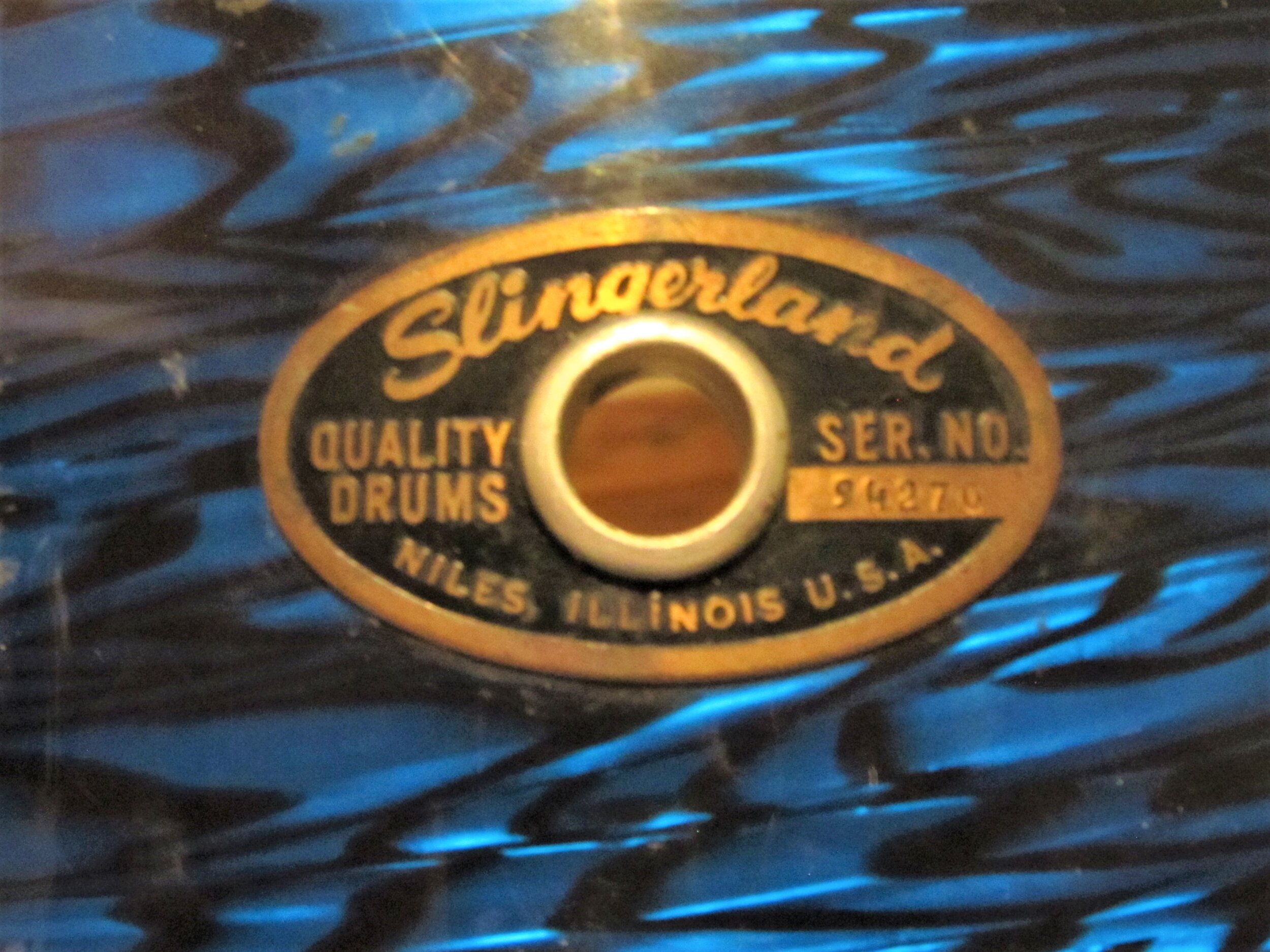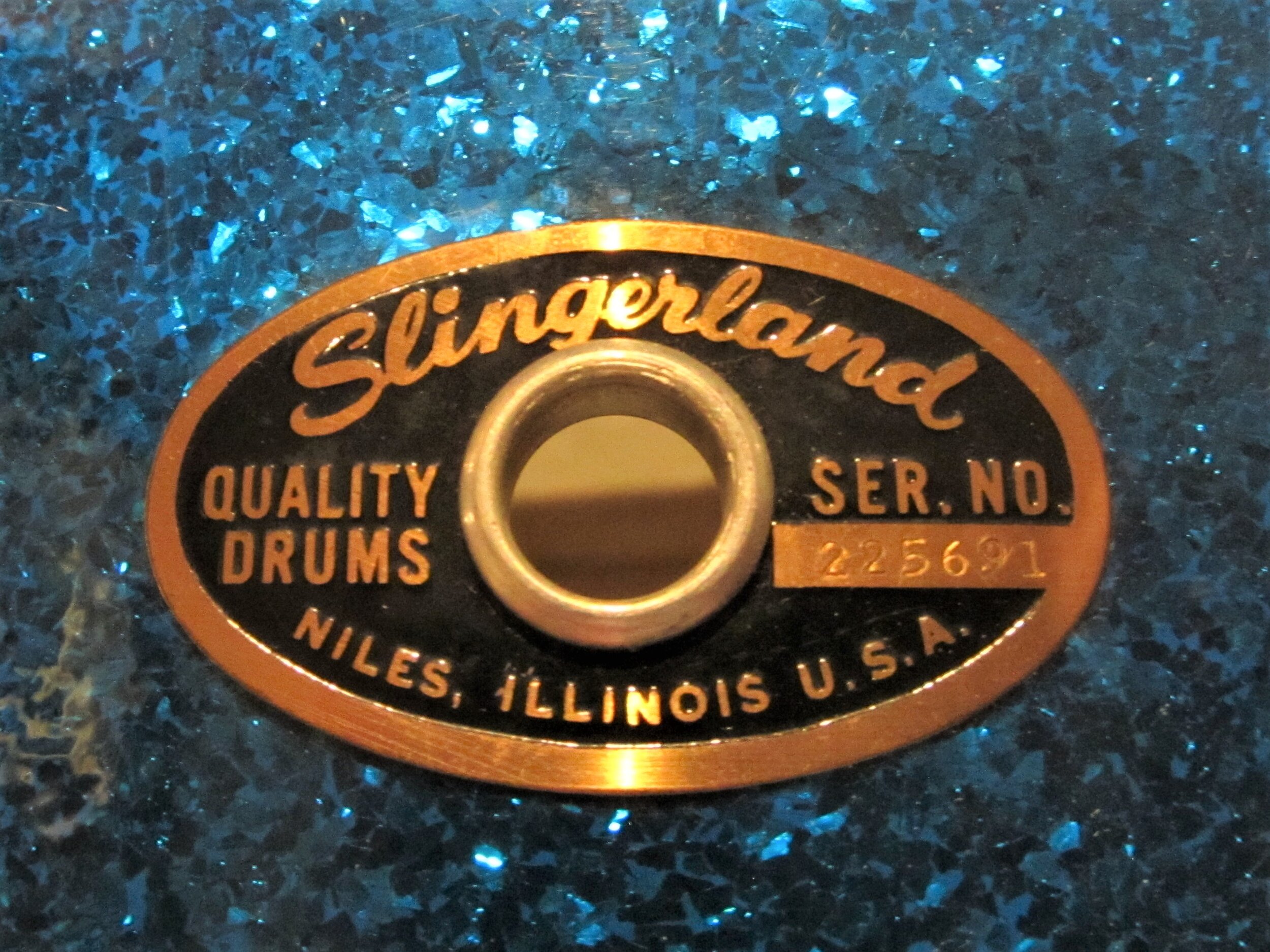Many vintage drum enthusiasts have taken advantage of the existence of serial numbers on drums as a relatively reliable tool for estimation of manufacturing dates. Many have compiled lists of drums’ serial numbers and date stamps to understand and exploit the relationship between them. Most cared little about why the serial numbers were there, but were just happy that the serial numbers were there to provide a rough tool for use in dating drums. As one learns more about how drum manufacturers used serial numbers, one begins to question the reason that serial numbers were used at all. For most in the vintage drum community, the answer to this question is something like, “The U.S. government, prompted by the insurance industry, imposed laws and regulations requiring serial numbers in drums in the early 1960s.” Many have heard or read this statement or some variation of it. Most have then repeated it. It has been repeated so often that it is now widely regarded as truth. The problem with this explanation is that it does not make much sense. The U.S. government did not care how a musical instrument manufacturer conducted its business. There are no public safety or strategic military goals which would be enhanced through applying serial numbers to drums. It is therefore difficult to believe that serialization of drums would be of sufficient importance to justify federal legislation or regulation. Rather than simply accepting the “Legend and Lore” of vintage drums, this particular question inspires further inquiry and a search for a better answer.
The Legislative and Regulatory Record:
An exhaustive search for laws and regulations governing the use of serial numbers in musical instruments found none. The current and historical versions of the United States Codes Annotated (USCA) and the Code of Federal Regulations (CFR) were reviewed. The Federal Register for 1962 and 1963 (the most pertinent time frame) was also explored. If there was a federal law requiring drums to have serial numbers, it should be in these places. Serial numbers are required by federal law for paper money (12 USCA § 413), firearms (18 USCA §926), pharmaceutical drugs (21 USCA § 351 et seq.), radioactive drugs using nuclear byproducts (10 CFR 32.201), aircraft and certain aircraft parts (18 CFR 45), manufactured homes (24 CFR 3280.6), denatured alcohol and rum (27 CFR 20.179), manufactured boats (33 CFR 181.25), renewable fuels (40 CFR 80.1425), CB radios (47 CFR 95.671), items worth more than $5,000 sold to the Department of Defense (48 CFR 252.211-7003), and motor vehicles (49 CFR 565). Percussion drilling (30 CFR 33.22) and containers for the transportation of percussion caps (49 CFR 178.318-2) are regulated, but not percussion instruments. Drums used in storing honey (7 CFR 1434.8), mining hoists (30 CFR 56.19011 et seq.), and transportation of hazardous materials (49 CFR 178.505 et seq.) are all regulated, but not musical drums. Searches for laws or regulations requiring use of serial numbers in drums have been conducted periodically over the last thirteen years, but nothing has been discovered. Although it is possible that in the morass of federal statutes and regulations something was missed, if it exists, it is hiding well.
Serial Number Use with Other Musical Instruments:
Although the vast majority of other musical instruments had serial numbers, drums as a group did not have serial numbers until relatively late in the game. Based upon the research of Dr. Arnold Myers, use of serial numbers in musical instruments dates back to the 1600s when the Ruckers family in The Netherlands introduced serial numbers on harpsichords they manufactured.[i] Subsequent use of serial numbers by European musical instrument manufacturers is pervasive and well documented, as Dr. Myers has written or co-written numerous articles featuring various manufacturers and instruments. It is not surprising that serialization would have been adopted by early American musical instrument manufacturers. Many of them employed European trained music instrument craftsmen who brought the practice of serial number use with them. Many American-made brass and woodwind instruments had serial numbers in the 1800s or early 1900s, usually within a few years of each company’s formation and entry into the market.[ii] Serial numbers were also used by piano and string instrument manufacturers. For example, Steinway & Sons has placed serial numbers in their pianos since about 1856.[iii] Martin started using serial numbers on mandolins in 1895 and guitars in 1898; Gibson started using serial numbers on guitars in 1903 and banjos in 1925; and Gretsch began using serial numbers on guitars sometime before World War II.[iv] Some of the drum manufacturers made other instruments with serial numbers, but did not provide serial numbers on their drums. For example, Ludwig made banjos and drums in the same building in Chicago, applying serial numbers to banjos from the 1920s until banjo production ceased in the 1930s.[v] Gretsch made guitars and drums in the same building in New York and for several years, guitars received serial numbers and drums did not.[vi]
Dr. Myers cites four reasons for serial numbers on musical instruments:
"1. To control instruments in stock and organise records of sales ....
2. To identify parts of the same instruments while they were being worked on in different areas within a factory
3. To identify instruments for after-sales service and repairs and facilitate the supply of replacement parts
4. In some cases makers seemed to like to show the size of their production by continuing their serial numbers to very high numbers"[vii]
Dr. Myers was contacted and provided with some background information about serial numbers in American drum manufacture. He was asked if he knew of any governmental laws or regulations which imposed requirements that musical instruments have unique serial numbers. He responded: "Thank you for bringing to my attention the interesting questions about what might have led drum makers to start using serial numbers. I suspect that unless you have a stroke of luck the answers may never be known. I am not aware of any government requirement for makers to number instruments, either in the U.S. or elsewhere. Of the reasons other than factory production management that you suggest, pressure from dealers seems the most likely since this would accommodate the fact that makers commenced the practice at different times."[viii]
The overwhelming majority of musical instruments had serial numbers for reasons other than government regulation. It is difficult to believe that drums are so unique that it would require special federal legislation and regulation to force drum manufacturers to use serial numbers.
Review of Published and Unpublished Information on Ludwig Drums:
Several drum historians have written or been quoted on the topic of adoption of serial numbers by Ludwig drums.
John Aldridge mentions on page 70 of Guide to Vintage Drums (1994) that Ludwig began to use serial numbers in response to a government regulation: "The first edition of this [Keystone] badge had no serial numbers on it and was used until the U.S. government began requiring more accurate records of inventory. Serial #'s were added in 1962 but not the way you might think. All the badges were numbered but the numbers were strictly for inventory purposes. Any number could go on any drum." This is earliest located mention of this theory of government regulation calling for serialization of drums. Mr. Aldridge repeated a variation of the statement in a 2005 DRUM! magazine article entitled "Chaotic Creativity - Ludwig Kits in the '60s." Mr. Aldridge was asked about the origin of his information. His email response was "I heard from Bill Ludwig II that it was more tax related. But in later years discovered that Bill would make things up if he didn't know the answer. Sooo, I'm afraid I can't shed any more light than that. I can't imagine they'd go through what it took to put serial numbers on drums unless there was some external influence.”
Ned Ingberman's September 2002 DRUM! Magazine article "How to Date 1960s Ludwig Drums by Serial Number" says, "This new surge in Ludwig’s production and sales coincided with a new government regulation enacted at about the same time (The regulation was brought to our attention by drum historian/insurance agent, Harry Cangany). These overlapping events would intertwine to have a direct effect on the collecting and dating of 1960’s Ludwig drums. Prompted by the insurance industry, the new regulation mandated serial numbers on certain goods including drums. (badge photo here) (sic) “Up until then,” said Mr. Ludwig, “some of our drums were date stamped and some weren’t – but none had serial numbers. Our dealers begged us to put them on, so we had our badge manufacturer imprint sequential numbers on the badges for all of our drums.” This article is widely available via the internet as it is referred to at the www.vintagedrumguide.com website and a re-issue of the article is at Not So Modern Drummer’s website.[ix] Many people researching vintage drums via the internet have read this article. It appears that many who have read it focus on the first reason given for serial numbers (government regulation) and gloss over the second (dealer request).
When Harry Cangany, Jr. was asked about information in the Ingberman article, he stated in an email that he is not personally aware of any law, but had been told about the existence of a law by Bill Ludwig II. Mr. Cangany also stated, "I got my first set in 64, the year that serial numbers started. Even then, I was told that manufacturers put them on due to a government policy brought about by the property and casualty insurance companies since the numbers could be used along with descriptions and values to properly insure and track them. Bill meant dealers wanted them.... for the sake of inventory, replacement and insurance." This is a bit surprising because when one reads the Ingberman article, it implies that Harry Cangany had knowledge of the existence of an actual government regulation.
Through email Ned Ingberman was asked if he could provide a citation to the law or regulation he wrote about in 2002. He replied that he did not have a citation and suggested that an attorney who specialized in the field could be engaged to do some research. After informing him that an attorney had looked unsuccessfully for such a law, he admitted that there might not be such a law after all. His words were: "Here we have an excellent example of erroneous conclusions based on presumption." It appears that he is saying that he is not actually personally aware of a law or regulation. Therefore, Mr. Ingberman’s oft-quoted statement about government regulation being the reason for serial numbers on drums is not supported. However, Mr. Ludwig’s quote about implementing serialization in response to dealer requests may still be correct.
Rob Cook, author of several books about American drum companies, shared some of his research materials with me in 2012 when I was writing my serial number-based guide to dating of Ludwig drums. Some of this unpublished material was recently revisited in a search for insight into the rationale for serialization of drums. Shortly after Ned Ingberman's article came out in 2002, Mr. Cook wrote to both Harry Cangany, Jr. and Bill Ludwig II asking about whether a law requiring serial numbers actually existed. Mr. Cangany wrote Mr. Cook an email saying there was no actual law. Mr. Cook’ s notes from a September 2002 phone call from Bill Ludwig II reveal that Mr. Ludwig II said there was no law, just the "law of the dealers" who requested serial numbers.
Unpublished Contact with Mr. Ludwig II:
In addition to Mr. Cook’s notes about the Ingberman article mentioned above, multiple people who had contact with Mr. Ludwig II before he passed away in 2008 asked him about why Ludwig used serial numbers.
Long time Ludwig endorser and collector Bun E Carlos posted in a thread on www.drumforum.org that that he had been told about the law/regulation requiring serial numbers by both William Ludwig II and Ludwig artist representative Todd Trent. I contacted Bun E Carlos directly and asked him about what Mr. Ludwig said. He responded, "the Chief (Bill Ludwig II) said ‘Gov't/Insurance Industry regulation’ when I asked him once back in the 90's.”
Todd Trent, when asked what he had heard from Mr. Ludwig, replied, “The way it was explained to me was as Bun e said. The government required it. Not for the company to use, but rather the consumer. Ludwig never kept track of who bought what. Nor did they track what numbers were used in any particular year or order. In fact they didn't even appear on paperwork as they were sold.”
Vintage drum collector Kevin Oppendike shared with me a letter he received from William Ludwig II in 1989. In response to Mr. Oppendike’s inquiry about serial numbers, Mr. Ludwig II wrote, “The serial numbers were placed on drums in answers to dealers’ requests so that they could inventory them in their stock. We made oaver (sic) 500 to 600 drums per day at our peak and just felt there was no reason to got to the extra work of recording each drum at the shipping dock.”
Rather than serial numbers following from a federal legislative mandate, it appears that the Ludwig instituted serialization of its drums in response to requests from its dealers, who were likely being pushed by their customers or their customers’ insurance carriers to include serial numbers so they would be easier to track. Mr. Ludwig II referred to the dealer requests for serial numbers as “the law of the dealers.” It appears that Mr. Ludwig II used "insurance requirement", “dealer request” and "government regulation" somewhat interchangeably, and the story became that a new federal law or regulation prompted by the insurance industry was adopted in the early 1960s. unfortunately, this story became accepted as truth and quoted as such without challenge for almost two decades.
Practices of the “Big Four” Manufacturers:
Only Ludwig’s reasons for using serial numbers have been discussed in published literature. Many assume that Ludwig led the way on the use of serial numbers. To the contrary, Ludwig was the last of the larger American manufacturers to adopt serial numbers.
Rogers. Gary Nelson, an historian of Rogers drums, indicated in email correspondence that Rogers introduced serial numbers on all of its instruments in about 1952/1953. He suggested the following words for a footnote to my earlier publication about Gretsch drums:
"Serial numbers were instituted after Grossman Music Corp. (Henry Grossman / Cleveland, OH) purchased the Rogers trade name and machinery from Joseph Rogers Jr. & Son (Cleveland S. Rogers / Farmingdale, NJ) upon the passing of the owner in 1952. Mr. Grossman named his company Joseph Rogers, Inc. and advertised serial numbers inside as a selling point for his drums…. (T)his was found in a late 1952 8 page mailer/advertisement for 1953."
In a later email, Gary Nelson was asked if there might be other reasons for Rogers' use of serial numbers. He responded:
“The only other reason that I would think is that Henry Grossman, who was in Cleveland OH, away from the Rogers plant on Joes property in Covington, OH had a factor in play. The numbers as they rose could of been not just a public sale point but more of an in house tally of how many of each model was selling for Henrys books. There were blank typed labels supplemented for special or early model drums as well. I guess Henry could of seen the shells records as they were ordered. There was much respect for each other to fudge the numbers. Henry was known to pop into the Covington plant from time to time."
This rationale fits with the first item on Dr. Myer’s list of reasons to use serial numbers.
Slingerland. Slingerland historian Dr. C. J. Wenk does not indicate in his articles on www.VintageDrumGuide.com why Slingerland used serial numbers, but indicates that Slingerland started stamping them onto its badges in October 1962. He notes that the application of serial numbers to Slingerland drums did not follow an orderly or sequential pattern and were applied in a similar manner as used by Ludwig. Interestingly, until about 1966, Slingerland badges in a typical drum set only appeared on the snare and bass drums, with mounted toms and floor toms not receiving badges. This certainly does not comport to a regulatory mandate to identify every drum with a serial number.
Gretsch. In separate research, Gretsch’s introduction of the paper label and serial numbers has been traced to about 1962. Some have speculated that Gretsch’s introduction of its lifetime shell guaranty would logically correspond with the introduction of paper labels inside its shells, as the paper labels with the serial numbers included language about the lifetime shell guaranty. Gretsch’s lifetime shell guarantee appears in Catalog #42 which has a copyright date of 1963. The use of a serial number for warranty purposes fits with the third item on Dr. Myers list of reasons that serial numbers were used. It would be reasonable to think that Gretsch would want some proof of authenticity of a Gretsch shell as part of the procedure for honoring the lifetime shell guaranty.
Based upon the excellent work of Edward Ball on Gretsch guitars, it appears that Gretsch exerted considerable control over the issuance and tracking of serial numbers, at least with the manufacturing of guitars.[x] It seems possible that serial numbers were also tightly controlled on the drum side of the business. A detailed study of Gretsch’s use of serial numbers in drums supports this theory.[xi] However, this provides no insight into why Gretsch started putting serial numbers in its drums in around 1962, when it had used serial numbers on other instruments since the 1940s. It is widely accepted that Gretsch’s production records for both guitars and drums were lost as a result of two plant fires in 1973, so a definitive answer may not be obtained.
Ludwig. In separate research about Ludwig serial numbers, badges with serial numbers first appear on Ludwig badges on drums with date stamps from late 1963, but some drums with 1964 date stamps had serial numbers without badges. This late 1963/early 1964 date is a between the 1962 date that John Aldridge suggests and Harry Cangany’s 1964 estimate.
The other large drum manufacturers were not following Ludwig’s lead regarding the use of serial numbers, as they all instituted serialization before Ludwig. The reasons for their adoption of serial numbers is still unclear, but it does not appear to have been a uniform response to a government mandate. It suggests that other factors were at work.
Small Manufacturers and Importers:
Smaller American manufacturers (Kent, RMC-FlatJacks) and most importers (Premier, Beverly, Trixon, Sonor, Pearl, Star) did not use serial numbers in their drums during this time period. No serial numbers were used by Camco during the 1960s, but Camco used a system of handwritten numbers on the interior of reinforcement rings in the 1973-1978 period. Walburg & Auge indicated manufacture or inspection date by handwriting it inside shells, but did not utilize serial numbers. Interestingly, Rogers drums manufactured in England during the 1960s had serial numbers, but these numbers generally aligned with the serial numbers used with other drums manufactured by Boozey & Hawkes, which produced English Rogers, Ajax and other brands in the same facility and not with those appearing in U.S. made Rogers drums. This may be because serialization was widespread among the many brass and woodwind instruments manufactured by Boosey & Hawkes and in place long before Rogers teamed up with them to create English Rogers drums.
The smaller drum manufacturers and importers apparently did not operate under any sort of mandate, whether government or insurance industry driven. It is difficult to believe that a law or regulation requiring serial numbers on drums would apply to only the four largest manufacturers and exclude smaller American manufacturers or those importing drums into the US from its scope.
Conclusion:
It is a bit of an uphill battle to disprove something that is so firmly entrenched in the legend and lore of vintage drums. It may have felt to Mr. Ludwig II like it had the power of law when dealers pushed for serialization, but it appears that there was no actual law or regulation that mandated serialization of drums in the 1960s.
—————————————————————————————————————————————————-
[i] Myers, Arnold, "Use of Serial Numbers in Dating of Musical Instruments," Journée d’étude Dater l’instrument de musique – Cité de la musique – 6 juin 2009. Available at: http://www.citedelamusique.fr/pdf/insti/recherche/dater/myers_en.pdf
[ii] http://www.woodwind.org/clarinet/Equipment/HowOld/, https://www.horn-u-copia.net/serial/index.html, https://www.conn-selmer.com/en-us/resources/serial-numbers
[iii] http://www.bluebookofpianos.com/steinwayspecs.html
[iv] https://acousticmusic.org/research/guitar-information/serial-numbers/
[v] Id.
[vi] Id.
[vii] Ibid, note 1.
[viii] Email with Dr. Arnold Myers.
[ix] http://www.notsomoderndrummer.com/not-so-modern-drummer/columns/ned-ingberman/how-to-date-1960s-ludwig-drums-by-serial-numbers.
[x] Edward Ball, Gretsch 6120 The History of a Legendary Guitar, Schiffer Books, 2010.
[xi] Richard E. Gier, Dating of Vintage Gretsch Drums Based Upon Serial Numbers: Challenging the Legend, Lore and Lies, Rebeats, Inc., 2011.
By Richard E. Gier
© 2020 All Rights Reserved

